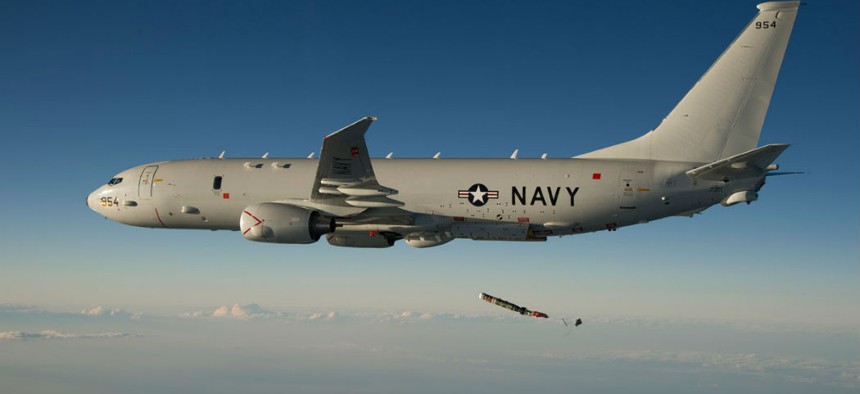P-8A software upgrade will increase communication, connectivity
The P-8A Poseidon will receive a software revamp as it approaches full operational capacity.
The Navy’s latest “spy plane,” the P-8A Poseidon, will now receive upgraded performance software on the road to achieving full operational capacity in 2023. The new software will enhance communication and navigation capabilities with new network connectivity, according to the Navy.
The P-8A will soon operate using the updated MilPlanner, FliteDeck Pro, and On-Board Performance Tool software. Jeppesen Sanderson Inc., a Boeing company, is the developer behind each of these software tools and has been tasked with integrating them with the P-8A
as part of a $13, 846,460 contract.
“Pilots say improved communications capability is one of the P-8A’s key benefits,” said a Navy spokesperson. In the P8-A acquisition requirements process, “increment 3 is focused on network ready open architecture and net-enabled weapons.”
The latest MilPlanner software is a flight planning and optimization program. The P8-A will be installed with a version of MilPlanner6 specifically tailored to the mission set of the reconnaissance aircraft, according to statements by the Navy.
FliteDeckPro, another enhanced software being installed in the P8-A, now includes Smart Notes software. According to Jeppesen, Smart Notes analyzes flight data in terms of chronology and geospatial locations without needing an operator to initiate or oversee the process.
A new version of the Tailored Enroute program in the P8-A means that now the data collected in-flight can be combined with the operator’s mission information set to provide a detailed situational picture. Additionally, the Tip Kit-On-Demand software feature ensures that navigation and charting data is all saved on a secure cloud network.
“The aircraft communication suite is robust and crews are able to submit post-mission reports while taxiing back to their line. Additionally, its connectivity is boosted by improved computing power and integrated datalinks and workstations,” said the Navy spokesperson. “Connectivity also augments its sonobuoy processing capability; this along with improved sensors and higher-resolution displays is said to improve the operator’s recognition differential.”
Dispensing and monitoring sonobuoys is one crucial function of the P8-A, according to the Navy. The aircraft desposits both passive and active sonobuoys--ones that simply record frequency transmissions and ones that emit and receive signals. According to Sparton, a major industry developer, sonobuoys are a key asset in anti-submarine warfare.
For navigational connectivity, the P8-A relies on the ARINC 424 Navigational Data program. According to a Jeppesen spokesperson, the ARINC 424 is the world’s largest navigational data, supplied with navigational data and information that is reviewed and verified.
“The introduction of Jeppesen FliteDeck Pro…continues the digital transformation of flight operations… The addition of Smart Notes, Tailored Enroute … capabilities now offer flight crews with the most accurate information in the industry, to increase situational awareness and efficiency in today’s complex airspace environment,” said Tim Huegel, Director of Jeppesen Flight Deck Solutions.
As a platform for this advanced software, the P8-A provides anti-submarine and anti-surface warfare capabilities, as well as general littoral reconnaissance, according to the Naval Air Systems Command. Armed with torpedoes and cruise missiles, the aircraft can fly at speeds of up to 564 mph.
“The P-8A and MQ-4 Triton are part of the Maritime Patrol and Reconnaissance family of systems,” explained the Navy spokesperson. “Information flow between the platforms and between their Tactical Operations Center will provide seamless intelligence to combatant commanders.”
Designed as the eventual replacement for the legacy P-3C Orion reconnaissance aircraft, the P8-A is expected to have completely upgraded software by 2022, in time to become fully operational in 2023.




